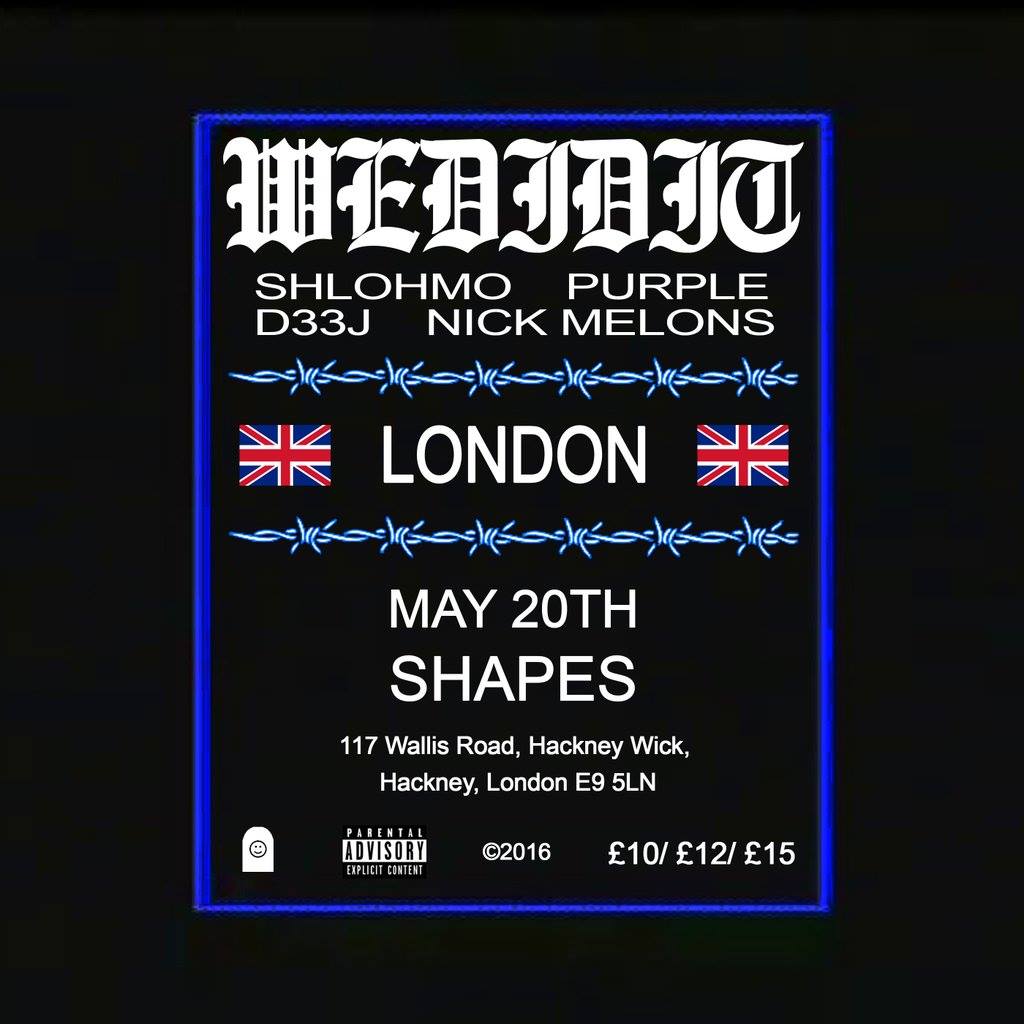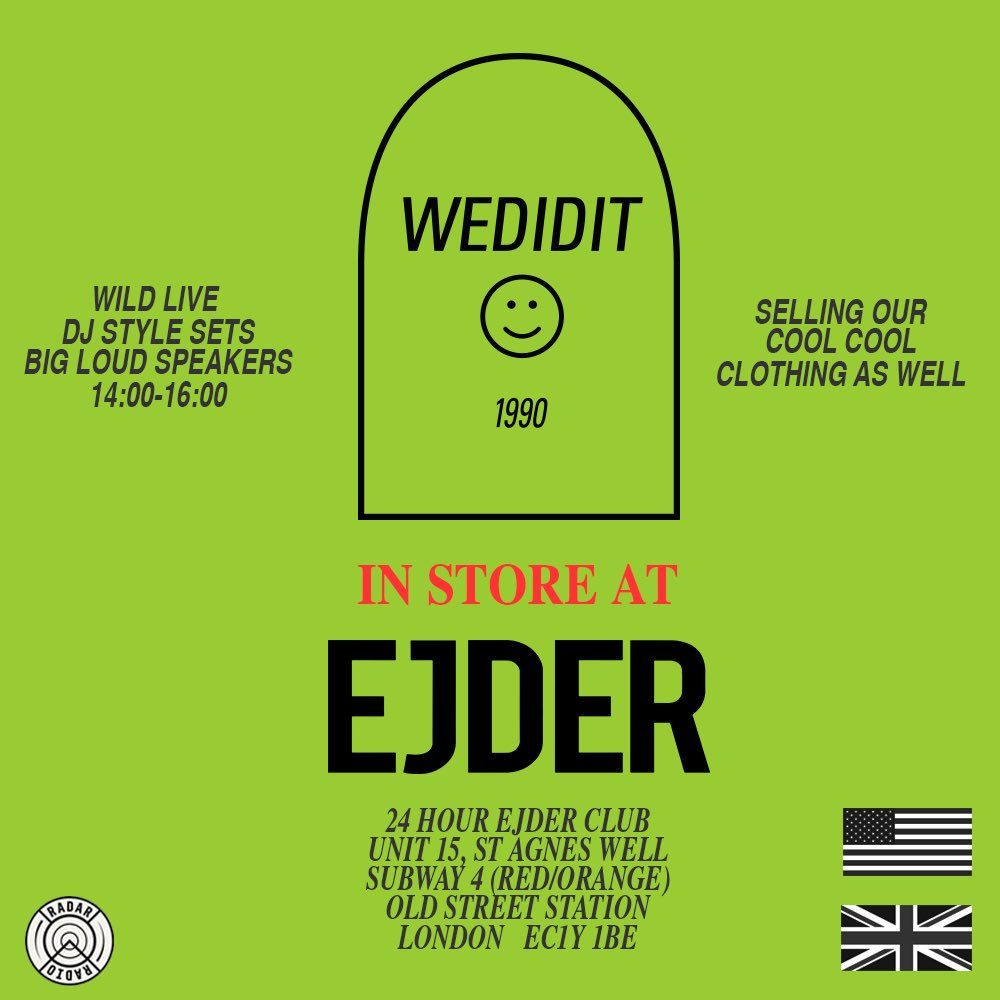Daniel Diasgranados (also known as @carving_ on Instagram and Twitter) is a 20-year-old photographer, artist, creative, and student based in Washington, DC and Richmond, Virginia. He's created album artwork for Scottish electronic music producer Sam Gellaitry via Soulection and XL Recordings, and has been featured in Dazed Magazine and the Urban Outfitters blog. I had the chance to chat with him over the phone – shoutout to our friend Sinmi for the introduction – about his creative process, his album artwork for Sam Gellaitry, the impact of social media on the art world, and topics like identity and diversity.
What does your creative process look like? What influences your work?
My work is split between the work I do for other people (my commercial or client-basis work) and then I have my own set of work where I have a narrative and a different kind of goal. With my personal work, I work mainly in portraiture, since that's what I'm most comfortable with. I've always been interested in the connection that a person makes with a camera through portraiture. In my work I also think about time and how we think about time as an object. Growing up, I spent a lot of my time listening to vinyls and spending a bunch of time in record stores. And a lot of my own influence has come from very early designs for album artwork. So looking at older photographers like Henry Diltz who did covers for folk, blues, and a lot of old jazz singers. I've looked at that pioneering of when photography and design were merging into the mixed media construction side that is so popular now.
[My work] ended up changing in my own attempt to mimic these designs by working with film. Some of my colleagues say that I ended up creating a level of surrealism that exists between the image itself and the process that the image goes through where it's a photo, but you may not perceive it as a photo. A lot of what I do from a technical perspective is that I flatten images as much as possible. And by flattening and compressing images, it removes a lot of depth so that you look at the image from almost a painterly perspective. So I sometimes avoid things like depth of field so that my images almost look like illustrations because that allows me to give more leeway in terms of how I construct an image. So I do look at a lot of photographs, but I don't have any favorite photographers. A lot of the things I make pull from different sculptures and set designers in the music world. So, set design, sculpture, and even levels of performance art have an influence.
What tools do you use to create your art?
When I was first starting out, I just started out with a camera and took pictures of family and friends. Now, I make things with like a scientific method in mind – a question, hypothesis, and solution. But the only way I can learn and grow is through different photography processes and techniques. I mostly work with 35mm or 6x6 cameras or 6x7 large format cameras. Sometimes I even do my work with my iPhone, my studio work – it just depends on what the project is and what I'm trying to achieve.
You mentioned how you were influenced by vinyls and visiting record stores as a young person. How exactly does music influence your work? Is it a combination of the actual songs themselves as well as the vinyl artwork?
Before, I limited myself to thinking that I was working with solely just music. But I really am working with sound and audio. I think music and sound design and any form of audio that is or isn't music can express things that visual art can't. So on top of just music, I listen to all forms of sound. I grew up listening to a lot of compositions and written scores from movies. I am also a big fangirl over foley artists, which are the artists that design the sounds for movies. So they work, for example, to make the sounds for when a character falls down the stairs and breaks pots and pans. I have always been interested in working with sound in general, which is so dynamic because of all the different ways sounds can be portrayed.
“I have a theory in my head that the access to tools and information has really limited us in terms of thinking outside of what can be possible. So with my own work, I try to work with more outdated tools and processes because it forces me to problem-solve issues in photography and design by hand.”
There wasn't any Adobe Creative Suite back then, and Photoshop was an actual "photo shop" where you would go in and layer images together. I realized that the less that they had back then, the more innovative and creative the work was, versus the interesting movement happening today with digital art, especially when it comes to portraiture. I have a theory in my head that the access to tools and information has really limited us in terms of thinking outside of what can be possible. So with my own work, I try to work with more outdated tools and processes because it forces me to problem-solve issues in photography and design by hand, versus cutting and pasting in Photoshop. So I have to put in a lot of work and money in my work sometimes, but it makes it so much more worth it. Sometimes the process of the work is in correlation to the work that I'm making for a certain musician. Because a lot of the work for a song is just as the song itself. They kind of go hand in hand.
I personally don't want to be making album artwork forever, but I appreciate doing it for the people I get to work with. Especially for the people I have a connection to outside of a client relationship, because then it's just more significant. My next step is thinking about how the still image in sound can work together to even solve world issues. My goal is to move outside of working within the music sphere, and then maybe returning back to it when I'm more developed.
I thought your album artwork for Sam Gellaitry's Short Stories, Escapism, and Escapism II were just a perfect visual representation of what I hear in his music. I'm curious about how that opportunity came about.
I've been friends with Sam since I was like 14 – we met through the Internet, like through Tumblr or something like that. I would send him photos I was working on – I would take photos of my friends skateboarding and things like that – and he would send me clips of him working on his music, but this back when he was just posting stuff on SoundCloud and was way younger.
My first year of school was at the University of Tampa, where I was studying business-oriented communication. But I was kind of moving in the direction of what I'm doing now. Sam was getting ready to release a project [with Soulection] so I just commissioned and made work for him. I also worked with my friend Travis Brothers, another fantastic designer, on it and we've just been making work ever since.
[Daniel's favorite track by Sam Gellaitry is "Understanding." Listen below.]
Did you collaborate with Sam in any way? Did you guys go back and forth with ideas?
If you're aware of the musician Arca and Jesse Kanda the visual artist, they kind of made work for each other. Arca is a musician who I've always looked up to because the visuality of their work is so key to their sound. Arca's sound feels like what Jessie Kanda's art would sound like, and Jessie Kanda's art looks like what Arca's sound what look like. So that's kind of the approach that I took with Sam's work. Sam's sound is dynamic in that his sound pulls from all of these shapes and characters that have not really been used in many levels of production. So while it can sound like a song, it could also be formatted for so many other things.
So making work for him, I thought about it in all these different contexts. Like his songs could also be scores or a compositions. I treat it like it's a composition – I think of his songs as many different shapes. A lot of these abstractions are inspired by older photographers like Barbara Kasten or science fiction novels and graphics from the 70s and 80s that have a lot of colors. But it's difficult to make in the sense that it requires so much and I have to build a studio from scratch and destroy the studios right after because the papers and material I use only last so long. I have to build sets just to shoot for it. It's the hardest work I've ever done but it's also the most fruitful.
“I have to create a method so that the Internet doesn’t use me, essentially. ”
In your interview with Urban Outfitters, you mentioned that you use the Internet prominently as a tool for looking at other people's work but also looking at everything. How do you think social media platforms have impacted the way people share and consume art?
Damn – you're asking all of the big questions. It's crazy because my thesis that I'm working on for the next two years is that exact question. So, [laughs], I can give you a shorter version. As I've been using social media to think about how work is shaped, it's been going on since the very day Instagram started and the very day that Twitter was a possibility. I've seen different shifts and Internet movements. The art communities are also merging with each other and changing – it's very dynamic. Since the advent of Tumblr, which is where I really started posting most of my work, in 2012.
The Internet is access. The fact that I can get creative opportunities through an Instagram DM is mind-blowing. Or the fact that someone can have a career on Instagram. We're in a new time period right now where we're still new to all of this. But for me, I don't really use [social media] as much as I used to. I spend more time just working on stuff and use it more for communication and research. But not as much interaction and conversation as I did two or three years ago. It takes so much time that I have to create a method so that the Internet doesn't use me, essentially.
I definitely agree that we have to be careful that social media doesn't "use" us. Social media is a bit of a divisive topic. Do you think it limits your creativity or expands it?
It can be all of those things. It's definitely been all of those things to me – both good and bad. It's helped me learn to think about how to approach things, but it's also boxed me in in terms of how I thought about tiny things. Like, for a point in time, I was only making work that fit in squares because I was so used to cropping images for Instagram, back when you could only post square images. I didn't notice it until my friend pointed it out to me.
Even years ago, I was more strictly commercial, so I spent so much time thinking about. I never had an independence. Up until university I was self-taught, so I used the Internet to learn as much as I could, since you learn by example. So when I got to university, I began to shape my own perspective a little bit more.
“I never really thought about my own identity until I left my community that was so diverse, because you get singled out real quick. So I ended up understanding the importance and role of having people of color – Black, Hispanic, Asian-American, Indian-American, Native-American – and its work in portraiture. ”
You also mentioned in the Urban Outfitters interview that you're working on a project that explores what it means to be Black and Hispanic and on the Internet. You also said that you're interested in topics like the media, social advancement, and socioeconomic disparities. Will this project be, in any way, a commentary on the current state of politics today?
I never really have a goal of making work that is sociopolitical. I think that's not a strength in mine – I think there are other people that have way much more to say and more skill to make work specifically about that. But my own work that could be seen in that lens is a project where I bring the studio abstractions to life. I'm working with my own community – I'm both Black and Hispanic – and come from a community that's primarily Black and Hispanic. So what I ended up doing is using my own friends in my photos that end up being mixed up with the abstractions that I build. And then that reality is surfaced through the final result, which my end goal is the disassociation between what it means to have a portrait and what it means to build a studio abstraction or still life. I've always been interested in fusing the two. I want to bring these to a larger life context. Because when I get to enlarge these projects, I can create a universe that's outside my reality.
So I don't have an intention to make anything political, but I'm sure someone could see it as sociopolitically charged. Since I don't like in a super diverse area now, it makes me appreciate and understand the roles that people of color play in the current art spectrum. I never really thought about my own identity until I left my community that was so diverse, because you get singled out real quick. So I ended up understanding the importance and role of having people of color – Black, Hispanic, Asian-American, Indian-American, Native-American – and its work in portraiture.
That's where Instagram kicks in – it helped me understand the importance of work that is not only diverse in nature but also diverse in thought ends up being its own political statement, even if it's unintentional, especially with the lack of cultural diversity that exists within the country right now.
Why did you decide to pursue art, and what does it mean to you?
I think I'm still figuring out the answer to that question through my work. My images have always been a documentation of what's been going on, but I've always wanted to make images, but I never really had the hand-drawn skills that a sculpture, painter or illustrator had. So when I picked up a camera I realized that I could build things from scratch with a camera, and that I could think of photography from a different approach than how many people approach their work. Growing up, I played guitar and bass, and music has always been a big part of my life. It makes me happy. I realized I could use all of this stuff to communicate their ideals. A lot of it is rooted in helping other people, even though I might not achieve that all the time. Because I've been doing a lot of this for other people – for like three or four years now – but I'm only 20 so I have a lot of time to think about what real direction I'm headed towards. I don't even know if I'll stick with the still 2D image.
I think my end goal is to work in film, possibly, or even sound itself – not as a musical artist, but someone to make sound and create things that are a performance, which is how I approach my work: like a play. I kind of write scripts for my shoots and think about the dynamics of performance and play. And in the end, it feels really fruitful.
--
Check out Daniel's work:
Website
Follow Daniel:
Instagram
Twitter
Tumblr
Facebook












